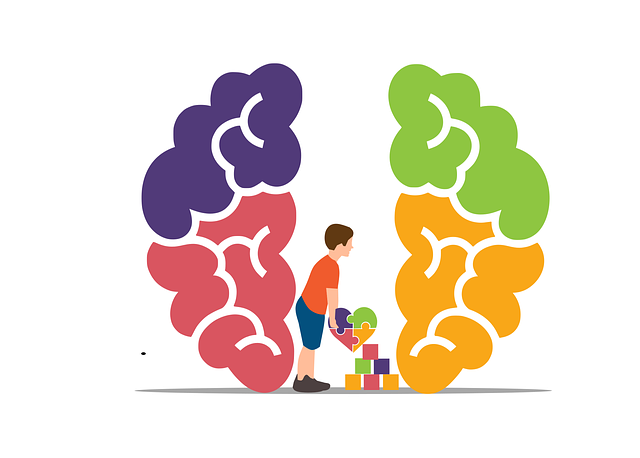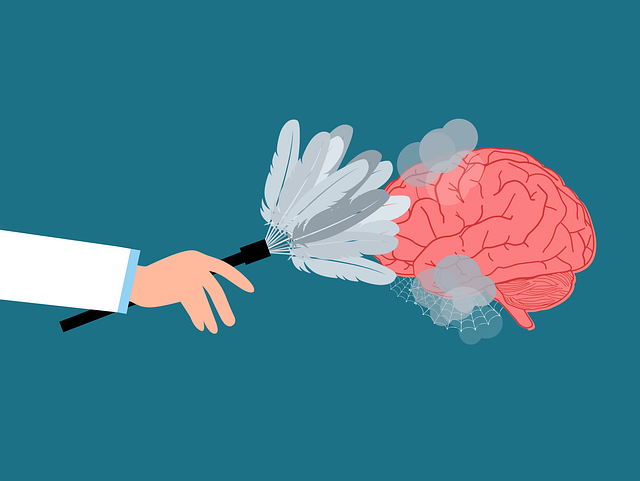Risk assessment is a cornerstone of safe and effective Boulder Autism Spectrum Disorder (ASD) therapy, focusing on identifying and mitigating hazards unique to ASD, such as sensory sensitivities, communication barriers, and emotional regulation difficulties. Through proactive measures like Emotional Intelligence integration, community outreach, and continuous improvement strategies, therapists create supportive environments, foster early intervention, and develop personalized harm-minimization plans tailored to individual client needs, enhancing overall well-being in Boulder ASD therapy.
In the realm of Boulder Autism Spectrum Disorder (ASD) therapy, risk assessment and harm minimization planning are paramount for ensuring safe and effective treatment. This comprehensive guide delves into the foundational principles of risk assessment, specifically tailored to ASD therapy, identifying potential hazards, and crafting robust harm minimization plans. By exploring practical strategies for implementation and continuous monitoring, therapists in Boulder can enhance client outcomes while mitigating risks, revolutionizing therapeutic practices.
- Understanding Risk Assessment: A Foundation for Safe Therapy Practices
- Identifying Potential Hazards in Autism Spectrum Disorder (ASD) Therapy
- Developing a Comprehensive Harm Minimization Plan
- Implementing and Monitoring Strategies for Continuous Improvement
Understanding Risk Assessment: A Foundation for Safe Therapy Practices

Risk assessment is a cornerstone of safe and effective therapy practices, particularly when working with individuals on the Autism Spectrum Disorder (ASD) in Boulder, CO. It involves a comprehensive analysis of potential hazards and their likelihood and severity to ensure the well-being of clients. In the context of Boulder Autism Spectrum Disorder Therapy, understanding risk factors unique to ASD is crucial for tailoring interventions that promote growth while minimizing harm. This includes recognizing sensory sensitivities, communication differences, and emotional regulation challenges often associated with ASD.
By integrating principles of Emotional Intelligence and Mood Management, therapists can create a safe and supportive environment. Public awareness campaigns development has played a vital role in normalizing ASD, fostering understanding, and encouraging early intervention. Through meticulous risk assessment, therapists can anticipate potential triggers, implement proactive strategies for harm minimization, and adapt therapy approaches to meet the individual needs of each client.
Identifying Potential Hazards in Autism Spectrum Disorder (ASD) Therapy

Identifying potential hazards is a crucial step in risk assessment for Autism Spectrum Disorder (ASD) therapy in Boulder. When tailoring support and interventions for individuals with ASD, therapists must consider various factors that could pose risks to clients’ safety and well-being. These hazards might include sensory sensitivities, communication challenges, and behavioral complexities often associated with the spectrum. For instance, a client’s over-sensitivity to certain sounds or textures could trigger anxiety or distress during therapy sessions, requiring careful consideration in environment setup and activity selection.
Mind Over Matter principles emphasize the power of proactive hazard identification and mitigation. By anticipating potential challenges, therapists can design personalized interventions aimed at reducing risks and fostering a safe, supportive therapeutic environment. Moreover, integrating Mental Illness Stigma Reduction Efforts into treatment plans can further benefit clients by creating inclusive spaces that promote understanding and empathy within the community. Effective risk assessment also extends beyond individual therapy sessions; well-structured Community Outreach Program Implementation initiatives can enhance support networks, ensuring individuals with ASD feel connected and empowered in their communities.
Developing a Comprehensive Harm Minimization Plan

Developing a comprehensive harm minimization plan is an essential step in ensuring the safety and well-being of individuals with Boulder Autism Spectrum Disorder (ASD) Therapy. This strategic approach involves identifying potential risks, implementing preventive measures, and establishing support systems tailored to each individual’s unique needs. By fostering an environment that promotes emotional intelligence and leverages confidence-boosting techniques, therapists can effectively navigate challenges and foster positive outcomes.
Emotional well-being promotion techniques play a pivotal role in this process, as they help individuals with ASD develop coping mechanisms and enhance their emotional resilience. Through structured planning and a deep understanding of their clients’ strengths and weaknesses, therapists can create personalized strategies that not only minimize potential harms but also empower individuals to navigate daily life with greater ease and confidence.
Implementing and Monitoring Strategies for Continuous Improvement

Implementing and monitoring strategies for continuous improvement is a vital aspect of risk assessment and harm minimization planning, especially in fields like Boulder Autism Spectrum Disorder Therapy. These strategies ensure that practices are not static but evolve based on ongoing evaluation and feedback. By integrating Self-Awareness Exercises into therapy sessions, practitioners can better understand client needs and adjust their approaches accordingly. This dynamic approach fosters a deeper connection and more effective treatment outcomes.
Regular monitoring involves tracking progress, identifying areas of improvement, and implementing changes through evidence-based methods. Conflict Resolution Techniques can be particularly useful in managing potential risks within the therapeutic setting. By teaching clients and caregivers these techniques, therapists empower them to navigate challenges constructively, reducing the likelihood of harmful situations. Furthermore, incorporating Stress Management strategies into treatment plans enables individuals on the autism spectrum to cope with stressors more effectively, enhancing their overall well-being.
Risk assessment and harm minimization planning are essential components of safe and effective therapy practices, especially in the context of Boulder Autism Spectrum Disorder (ASD) Therapy. By understanding potential hazards and developing comprehensive strategies, therapists can create a supportive environment that fosters growth while minimizing risks. Implementing these plans requires continuous monitoring and improvement, ensuring that every session is a step towards positive outcomes for individuals on the ASD spectrum. This structured approach promotes best practices in therapy, ultimately enhancing the quality of care provided in Boulder ASD Therapy settings.














